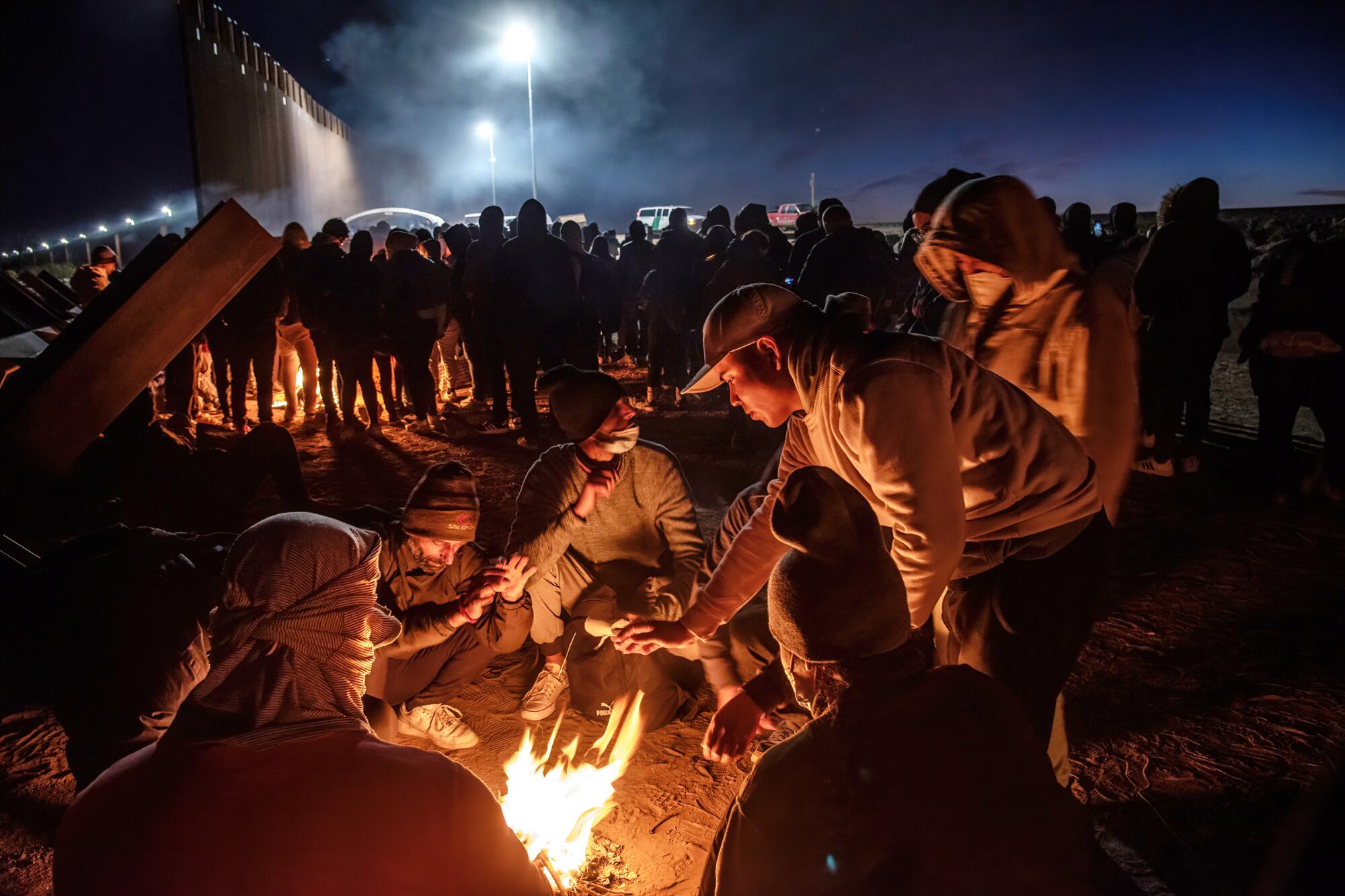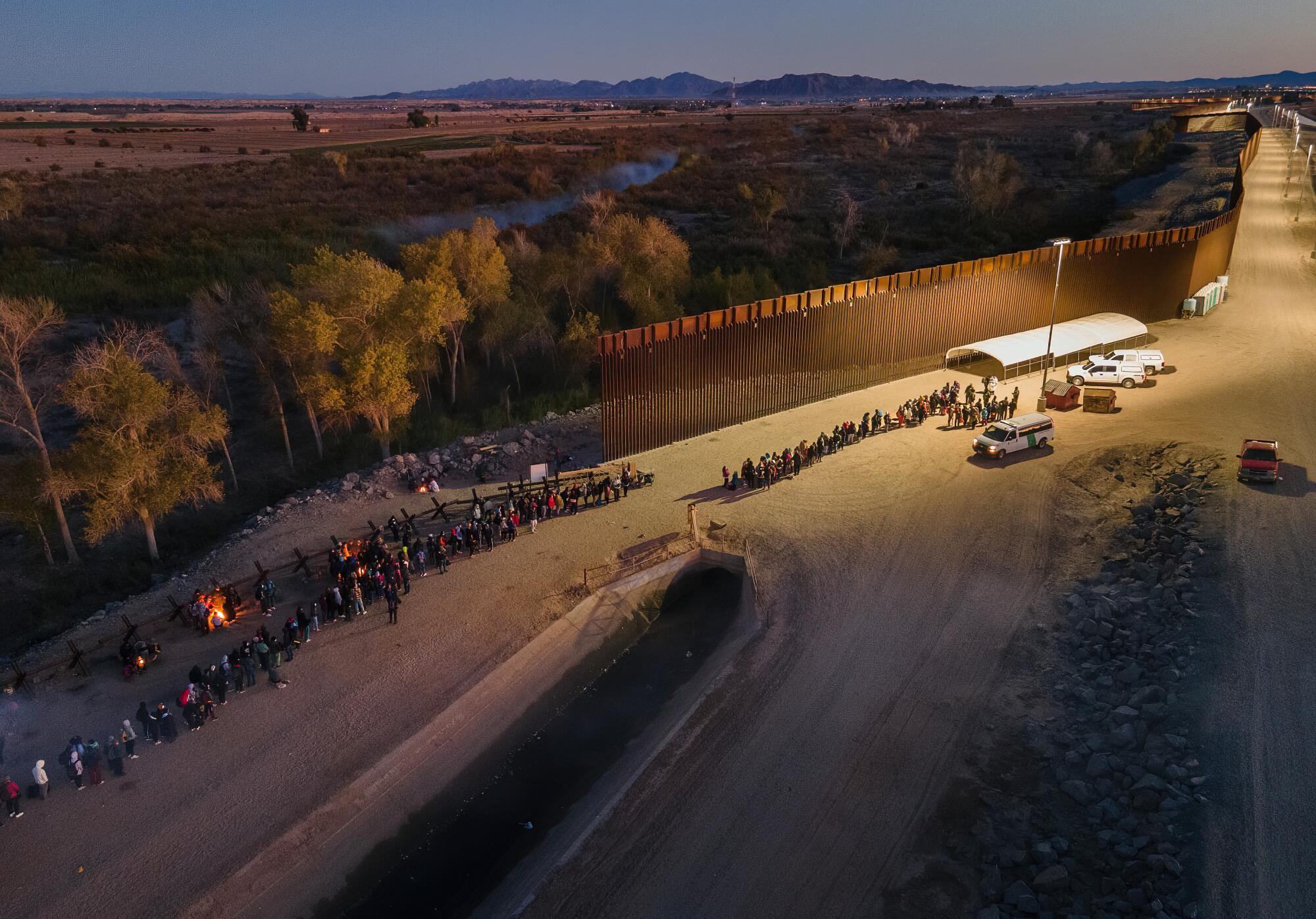
- Share via
Supreme Court Chief Justice John G. Roberts Jr. has temporarily paused the termination of a controversial Trump-era immigration policy known as Title 42 that was set to end Dec. 21.
But the flood of migrants to the southern border remains.
Spotlight: southern Arizona.
Around 3 a.m. each morning, hundreds of people line up next to the brightly illuminated 30-foot-tall steel fence. They shiver in the subfreezing desert night or huddle around makeshift warming fires waiting to surrender to Border Patrol agents.
They have traveled from Cuba, Haiti, Dominican Republic, Venezuela, Colombia, Guyana, Ecuador, Peru, Brazil, Bolivia, Chile, Ecuador, Afghanistan, Russia and Georgia to a single gap or one of several locked gates in the border wall.
Each one intends to make a plea for asylum.

Many struggled to pronounce the names of American cities where they claimed they had a relative or a friend.
Multigenerational families and sojourners said they’d spent days, weeks or months making flights and taking long bus rides, and some said they walked for months to get here.

They knew well in advance that once they arrived at the border to wait in a line and be expected to surrender everything that couldn’t fit into a one-quart zip-lock plastic bag.
In 2022, there have been so many “give-ups” that Yuma Station Border Patrol special operations supervisor James Wright put up shade canopies as shelter from the scorching summer sun and tanks of fresh water.



More to Read
Sign up for Essential California
The most important California stories and recommendations in your inbox every morning.
You may occasionally receive promotional content from the Los Angeles Times.













